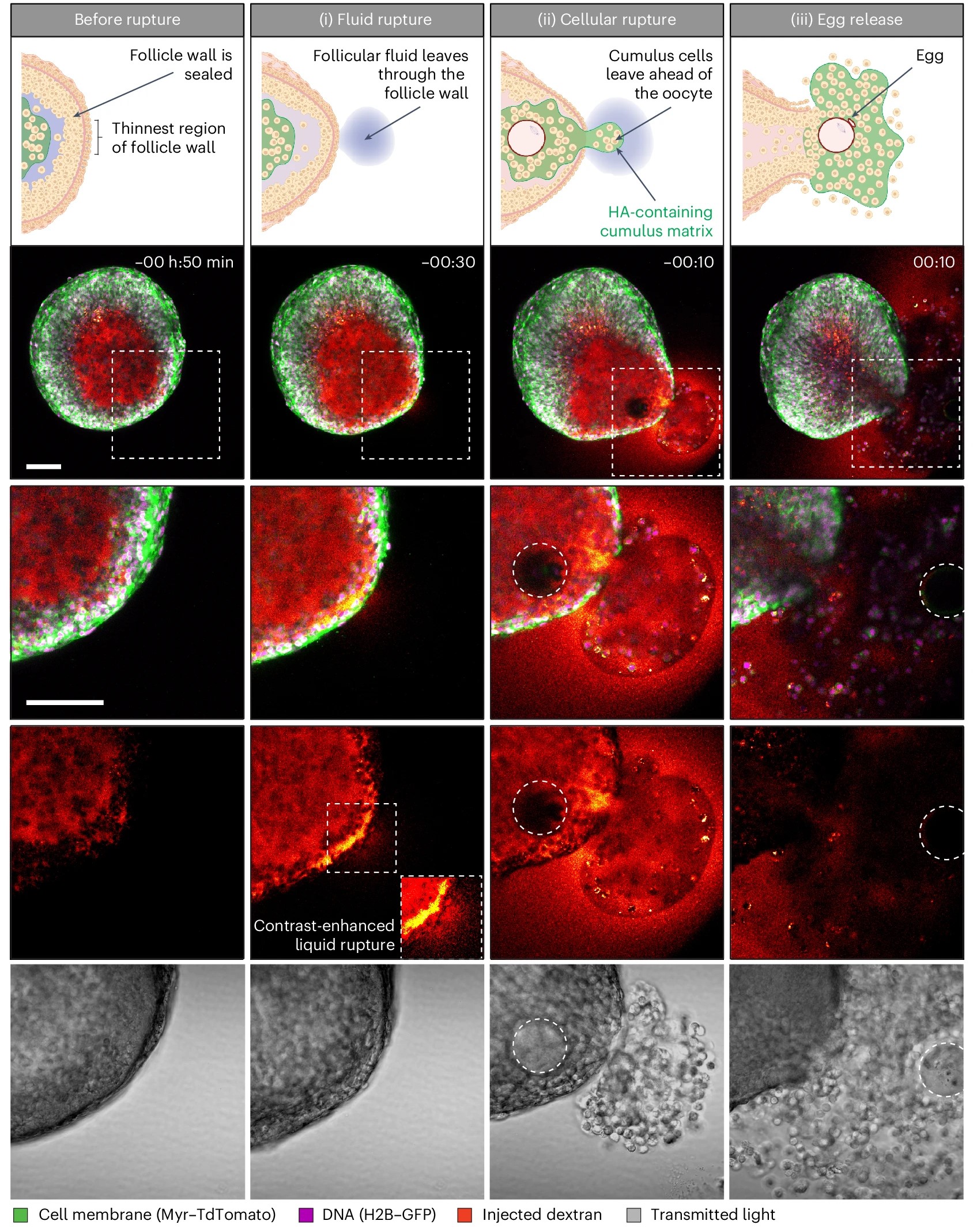Ovulation – it’s the point at which an egg cell is mature enough that it’s ready to leave its cozy home inside a fluid-filled sac within an ovary. That’s all there is to it, right? Wrong. In fact, thanks to new live imaging techniques, researchers have now showcased the process in previously unseen detail.
Much of what we know about ovulation comes courtesy of preserved tissue samples, and for good reason – capturing ovulation as it happens is easier said than done. However, without a live-action view of the process, it’s difficult to truly understand how it works, which has a wider impact on our understanding of reproduction and fertility.
A team from the Schuh Lab at the Max Planck Institute for Multidisciplinary Science has now found a solution. They developed a live imaging system with which they were able to visualize the entire process of ovulation in isolated ovarian follicles – the fluid-filled sacs that contain eggs – taken from mice.
Using this method, the researchers captured how ovarian follicles undergo some pretty dramatic changes during ovulation. These changes are split into three distinct phases: expansion, contraction, and rupture.
The expansion phase is what it says on the tin – the follicle gets bigger. However, this isn’t because of an increase in the number of cells, as is often the case when tissues expand. Instead, it was found that fluid moves into the follicle, causing it to swell.
In the contraction phase, the follicle shrinks, which the team found was controlled by smooth muscle cells.
It’s the third phase where the study really got into the finer details of ovulation, with the continuous imaging showing that rupture – the release of the egg – is split into three stages of its own. Fluid first leaks out of the follicle, then a small gap in the follicle wall allows some cells to escape, and finally, the egg bursts out of the cell in spectacular fashion.

The different stages of rupture during ovulation.
The live imaging technique also meant that the team were able to monitor the levels of different molecules through the different phases, allowing them to pinpoint which ones were controlling the process.
The expansion phase, for example, was found to be driven by the secretion of hyaluronic acid – turns out it’s more than just an ingredient in your favorite fancy moisturizer. The researchers were able to demonstrate this by adding in something that stopped hyaluronic acid from being made; when they did this, the follicle didn’t expand and ovulation was blocked.
In the paper’s concluding remarks, the team says that the study’s findings demonstrate that ovulation is “a remarkably robust process that requires carefully timed signalling events and complex coordination between the thousands of cells of the follicle.”
Thanks to the new imaging system, we’re now able to witness that complexity with our own eyes, and the researchers hope that the study will pave the way for future research into the finer details of ovulation.
The study is published in Nature Cell Biology.
Source Link: Watch Ovulation In Action: Amazing New Footage Captures How It’s Controlled